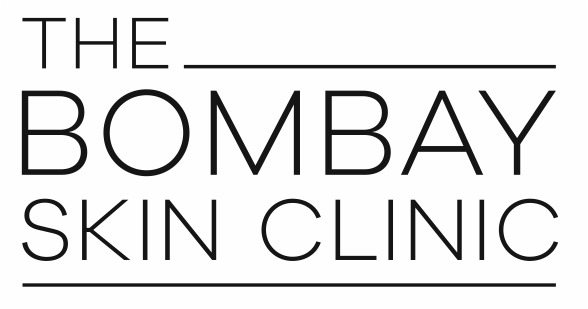Overview | Causes and prevention | Treatment options | Naturally reducing jowls | Future skincare tips
You may have heard of the term ‘jowls’. What are they? Well, ‘jowls’ are often used to refer to the sagging skin under your jawline or chin. Almost everyone who ages develops jowls. It results when your skin becomes less elastic and thinner over the course of life.
Are you worried about how your jowls are affecting your physical appearance? Well, in this article, I will explain how I have helped thousands of patients find the right jowls treatment to effectively reduce the appearance of this skin problem.
What are the main causes behind jowls?
Naturally, you develop jowls because of the loss of elastin and collagen; the latter is the protein that makes up the connective tissue in your body. Due to this, gravity makes your skin sag and lower to either side of your chin and mouth. Genetics can also cause jowls; so if either of your parents had them, you are more likely to develop them. Lastly, environmental factors and lifestyle habits can also cause them. These factors include frequently making expressions that stretch your skin, overexposure to UV rays of the sun, dramatic weight loss, looking down at phones or computers for extended durations, and smoking.
How can you avoid getting jowls?
Even though some factors are beyond your control, I recommend doing the following to help prevent jowls from developing:
- Limit screen time: Try to keep your head at a natural angle when using a phone or computer
- Limit sun exposure: Always apply sunscreen before heading out for the day
- Avoid smoking: Chemicals in cigarettes and other types of tobacco can harm your skin
- Follow a healthy lifestyle: Eat a healthy and balanced diet, exercise regularly, and sleep on the back instead of your stomach or side.
What are the treatment options for getting rid of jowls?
There are many surgical and non-surgical jowl treatments to choose from, which I perform at The Bombay Skin Clinic. These include:
- HIFU – This jowl treatment uses high-intensity focused ultrasound energy to target the saggy skin, tightening it, and thus lifting it. By heating up and stimulating collagen fibers, they thicken and result in a lifting effect. As this device is not a laser device but an ultrasound device so it allows the heating of the deep tissue, which happens by focused high intensity ultrasound waves.
There are no signs of burns or side effects as the tissue is not heated by laser but more with ultrasound waves. This allows deep dermal heating and helps to stimulate collagen which helps to give the skin a non surgical facelift. It is perfect for droopy jowls and even crow’s feet and forehead lines. It is suitable for patients of any age and mostly all skin types. At The Bombay Skin Clinic, I use the Ultraformer III to correct structural weakening and contour the face tightly. - Thread lift – This treatment involves the use of temporary sutures to produce a ‘lift’ in the skin. So, instead of removing the loose facial skin through surgery, it simply suspends it to create a tightening effect. It also promotes the body’s natural healing response, creating more collagen to tighten the skin. As compared to a facelift, a thread lift offers reduced recovery time and lower risks.
- Face/neck lift – This surgery involves general anesthesia, incisions, and you take a few days to recover. The neck lift is performed by removing the fat, rearranging the skin, and tightening muscles around the neck area to shape the jawline. The facelift is performed by removing the fat, rearranging the skin, and tightening the muscles on the lower part of the face, to help the face and neck appear the same. These surgeries can be done together. The general risks that may be expected are internal bleeding, sepsis, improper healing or swelling, damage to muscles or nerves, and bruising.
- Dermal fillers – These are injections of substances made from hyaluronic acid. They are injected into the chin and neck to help fill volume into the jowl and make them appear less saggy than they are. Certain fillers help your body create more collagen to keep the skin tight. Besides infection, the risks involved are very few. You may also face some skin redness and lumps, as noted by the American Society of Plastic Surgeons. There is no downtime and results may last up to one year.
- Thermage jawline tightening – This is a non-surgical procedure that uses radiofrequency and heat energy to tighten the skin around the chin and neck with a special tool called a Thermatip. The intense vibration causes an inner explosion in the fat tissues to get rid of lipocyte. The fatty acid, waste, and toxins are then removed via the lymphatic system. This treatment can be done multiple times to ensure the collagen in the skin remains tight. Downtime is minimal and the procedure can be completed in a single day. The risks involved include infections but these occur rarely.
- Ultherapy – This involves the use of ultrasound therapy to help stimulate the long-term creation of collagen in the deep skin layers. Most of my patients only require one session and no downtime. Patients notice a continual improvement in the skin’s firmness and tightness even months after the treatment. This procedure has been noted to increase skin tightness by the National Center for Biotechnology Information.
- Radiotherapy – This uses intense radiating heat to stimulate bundles of elastin fibers and collagen about 2 mm under the surface of the skin. This causes the bundles to recoil and tighten the skin. It also tricks the body into thinking connective tissues are damaged, thereby triggering the healing process. Many of my patients don’t require more than a few sessions a year for the best results.
- Laser therapy – Laser skin tightening can be used to tighten the loose skin of the jowls. It is non-invasive, non-surgical, and not painful. The type of laser used depends on the extent of your loose jowls as well as your skin type and needs. During the procedure, you might feel some heat and discomfort but this is only proof that the jowl reduction treatment is working.
- Liposuction – This is another surgical jowl treatment where the doctor uses a microcannula to remove the fat from the chin area. Liposuction helps prevent future sagging and reshapes the skin. In this treatment, general anesthesia and a few weeks of recovery are required. The risks that can be expected are internal bleeding, damage to muscles or nerves, bruising, complications from anesthesia, and sepsis. Liposuction is one of the most common ways to remove the unwanted body fat, as noted by Stanford Health Care.
- CoolScuplting – This is a non-invasive fat reduction treatment that helps get rid of jowls with minimal downtime and no surgery. With more than 5 million treatments carried out worldwide, this is the only US FDA-approved machine of its kind. It freezes the unwanted fat in the jowls with a controlled cooling process called cryolipolysis. The destroyed fat cells are eliminated naturally by the body over the next few days or weeks. A few side-effects of the treatment include, blanching, aching, cramping, firmness, stinging, and redness.
- Botox injections – Botox, or botulinum toxin, injections can be given in the platysma muscle and masseter muscles. This chemical has become popular in the beauty industry and is used in small doses for aesthetic purposes to reduce skin wrinkles. The FDA has approved it for the treatment of various health concerns as well. This drug can help define the jawline, improving the jowls and narrowing the face.
How can you reduce jowls naturally?
You can reduce jowls naturally by following certain therapies like face yoga, face building, facial or lymphatic massage, and acupressure or acupuncture. Ensure to follow through with a long-term regime of these exercises to see long-lasting results. I also recommend starting early and taking care of the skin with treatments, like anti-aging skin tightening methods to prevent skin from sagging too much.
What can you expect during a consultation with a dermatologist?
When you consult with me, I do a full review of your medical history, health, medications being taken, and previous face treatments. With this, I determine the exact cause of your jowls. I also conduct a physical examination of your jowls before recommending the most ideal line of treatment for you. I also like to take a photograph and discuss with my patient what bothers them and what can be improved with which treatment. I like to treat the consultation as an educational session for patients to be aware of all the treatments possible.
What results can you expect after the treatment?
The results vary from patient to patient. They depend on the extent of loose skin and your skin type and needs. Generally, the results from a surgical procedure are long-lasting. The results from non-surgical procedures may last a few months or a year but you need to maintain them by following a proper skin care routine.
Are there any risks involved with the treatment?
As mentioned above, there are some risks involved with surgical and non-surgical jowl reduction procedures. However, I make every effort to ensure your safety and well-being both during and after the treatment process. All risks will be minimized to the best extent.
What are the minimum sessions required to get rid of jowls?
This again varies from patient to patient based on their goals, requirements, and the extent of jowl development. For most patients, one session is enough. Others do require a few follow-up sessions for maximum results. I will help you chart out a long-term jowl treatment or jowl reduction plan if need be.
What are the immediate and future steps after the treatment?
After a jowl reduction procedure, you should not aggravate the treated facial area and avoid touching it. Also, you must avoid immediate sun exposure. For the next few days, remember to apply a mild yet effective sunscreen when stepping out. You can apply soothing day creams and night creams. In addition, avoid strenuous exercise, saunas, and steam rooms that may irritate the treated area and hamper effective recovery and healing.
Closing thoughts
Let me reassure you that you have many jowl treatment and jowl reduction options available at your disposal. If you are unhappy with the saggy skin under your chin, then be sure to talk to an experienced dermatologist, especially if you are 60 years or older, as this could increase the chances of complications. Consult with me today and get rid of those annoying jowls for good!
References
- National Center for Biotechnology Information: https://www.ncbi.nlm.nih.gov/pmc/articles/PMC4327394/
- Stanford HealthCare: https://stanfordhealthcare.org/medical-treatments/l/liposuction.html
- American Society of Plastic Surgeons: https://www.plasticsurgery.org/cosmetic-procedures/dermal-fillers/recovery

 Dr. Batul Patel is a celebrity dermatologist and the medical director of The Bombay Skin Clinic an award winning clinic located in South Mumbai & Bandra. She is a passionate and dedicated dermatologist with expertise in all fields of dermatology, trichology and aesthetic dermatology. She has been practicing for more than a decade. Her range of expertise include emsculpt NEO, coolsculpting, fillers, acne treatment, lasers, skin rejuvenation, hair loss, hair transplant, PRP & pigmentation treatments.
Dr. Batul Patel is a celebrity dermatologist and the medical director of The Bombay Skin Clinic an award winning clinic located in South Mumbai & Bandra. She is a passionate and dedicated dermatologist with expertise in all fields of dermatology, trichology and aesthetic dermatology. She has been practicing for more than a decade. Her range of expertise include emsculpt NEO, coolsculpting, fillers, acne treatment, lasers, skin rejuvenation, hair loss, hair transplant, PRP & pigmentation treatments.